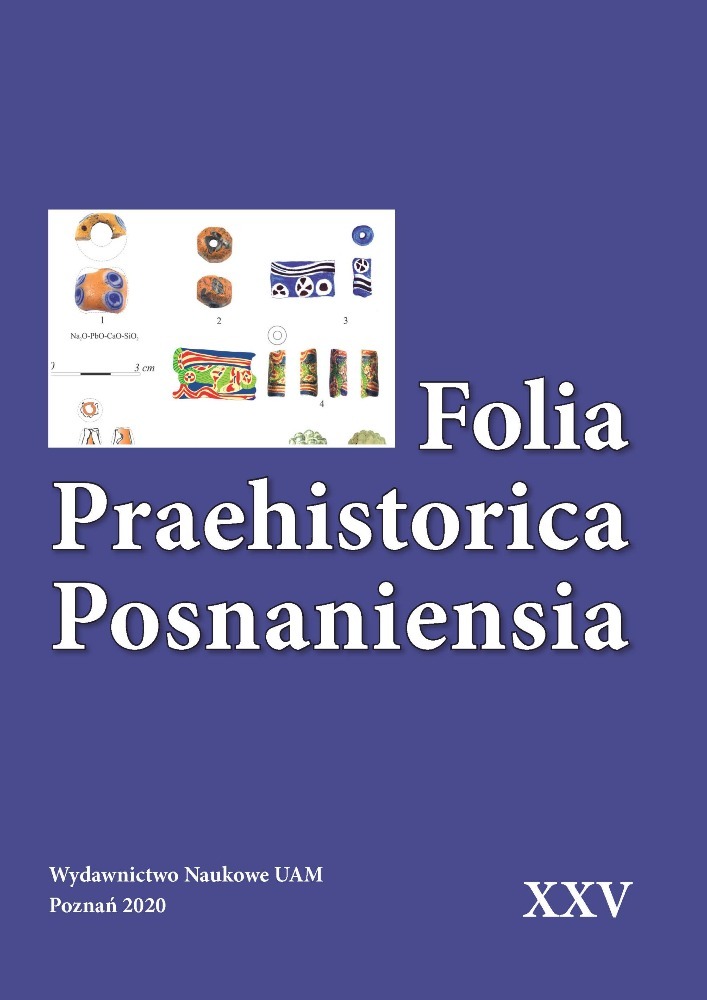Abstract
The aim of the article is to outline the need to reconceptualized the early medieval burials of “vampires” from Poland. These burials are understood as the remains of the so-called “anti- vampire” practices resulting from the social perception of bad death. These, in turn, are recognized as a socio-religious phenomenon, the assumption of which was to postpone the evil actions of the ‘vampire’ by means of certain measures. Due to doubts about the term “vampire”, concerning both the linguistic sphere and the cultural and historical realities, it is suggested not to use it. The proposed alternative, more precise terms would therefore be the terms “returning dead” or “(un)dead”. Another issue raised is the setting of ‘anti-vampire’ burials in an atypical framework. “Anti-vampirical” burials meet the criteria of atypicality on a macro scale, however, it is possible to consider them typical, assuming that they functioned in the culture of Western Slavs in the early Middle Ages as belonging to a specific social group.
References
Aspöck, E. 2008 What Actually Is a ‘Deviant Burial’?: Comparing German-Language and Anglophone Research on ‘Deviant Burials’. W: E. M. Murphy (red.), Deviant Burial in the Archaeological Record (s. 17–33). Oxford: Oxbow Books.
Baranowski, B. 1981 W kręgu upiorów i wilkołaków. Łódź: Wydawnictwo Łódzkie.
Gardeła, L. 2015 Vampire Burials in Medieval Poland. An Overview of Past Controversies and Recent Reevaluations. Lund Archaeological Review, 21, 107–126.
Gardeła, L. 2017 Bad Death in the Early Middle Ages: Atypical Burials from Poland in a Comparative Perspective. Rzeszów: Oficyna Wydawnicza „Zimowit”.
Jurek, T. 2016 „Wampiry w średniowiecznej Polsce”, Łukasz Maurycy Stanaszek, Warszawa 2016: [rec.]. Roczniki Historyczne, 82, 227–229.
Kolczyński, J. 2003 Jeszcze raz o upiorze (wampirze) i strzygoni (strzydze). Etnografia Polski, 47(1–2), 211–246.
Moszyński, L. 1993 Przedchrześcijańska religia Słowian na Pomorzu na tle ogólnosłowiańskim. Studia Gdańskie, 9, 11–43.
Pełka, L. J. 1987 Polska demonologia ludowa. Warszawa: Iskry.
Stachowski, K. 2005 Wampir na rozdrożach. Etymologia wyrazu upiór ~ wampir w językach słowiańskich. Rocznik Slawistyczny, 55, 73–92.
Stanaszek, Ł. M 2016 Wampiry w średniowiecznej Polsce. Warszawa: Narodowe Centrum Kultury.
Zoll-Adamikowa, H. 1971 Próba periodyzacji wczesnośredniowiecznych praktyk pogrzebowych w Polsce. Archeologia Polski, 16, 541–556.
Zoll-Adamikowa, H. 1995 Die Jenseitsvorstellungen bei den Heidnischen Slawen: Defunciti vivi oder immaterialle Seelen? Przegląd Archeologiczny, 43, 123–126.
Żydok, P. 2004 Wczesnośredniowieczne pochówki antywampiryczne. W: Z. Kobyliński (red.), Hereditatem Cognoscere. Studia i szkice dedykowane Profesor Marii Miśkiewicz (s. 38–66). Warszawa: Wydział Nauk Historycznych i Społecznych Uniwersytetu Kardynała Stefana Wyszyńskiego; Państwowe Muzeum Archeologiczne; Instytut Archeologii Uniwersytetu Warszawskiego.
